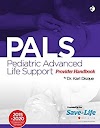Textbook of Diagnostic Microbiology



ACLS: Qquestion and Answer by (NHCPS) True or False: Synchroni…

BLS: Qquestion and Answer by (NHCPS) True or False: The jaw-thrust…

جميع كتب د. محمد المطري في الجراحة للتحميل Surgery books by dr…

جميع كتب التشريح - أناتومي للدكتور سامح دوس ِAnatomy books by…

Internal Medicine Books, Dr. Ahmed Mowafy (2020-2021) كتب الباطنة لـ د/…

السلام عليكم بوست طويل مهم للدكاترة اللي ما زالت في بداية طريق ا…

لطلاب الطب البشري : أفضل مرجع تذاكر منه كل مادة (تجربتي الشخصي…

Internal medicine Books Dr. Mahmoud Allam (2021) كل كتب الباطنة لـ د / …

PALS: Qquestion and Answer by (NHCPS) True or False: Shock may o…

Clinical Approach to Diagnosis - Salah Ibrahim كتاب د. صلاح إبراهيم لل…

جميع كتب د. محمد المطري في الجراحة للتحميل Surgery books by dr…

Download FREE Videos & PDFs of Board and Beyond USMLE STEP 1 …

BLS: Qquestion and Answer by (NHCPS) True or False: The jaw-thrust…

جميع كتب التشريح - أناتومي للدكتور سامح دوس ِAnatomy books by…

كتب و تفريغات و مراجعات الباطنة للدكتور محمد الشافعي Internal …

ACLS: Qquestion and Answer by (NHCPS) True or False: Synchroni…

لطلاب الطب البشري : أفضل مرجع تذاكر منه كل مادة (تجربتي الشخصي…

Internal Medicine Books, Dr. Ahmed Mowafy (2020-2021) كتب الباطنة لـ د/…

السلام عليكم بوست طويل مهم للدكاترة اللي ما زالت في بداية طريق ا…

Internal medicine Books Dr. Mahmoud Allam (2021) كل كتب الباطنة لـ د / …
✅ WE HAVE A TOTAL OF:
Books & Articles.
BTC: 16vRuNfaCwCHrjznKUzcT5UkgToXJDwcXj
USDT (TRC20): TAYUVSCVUe74neECmtYzoRpyNrhkRuhemS